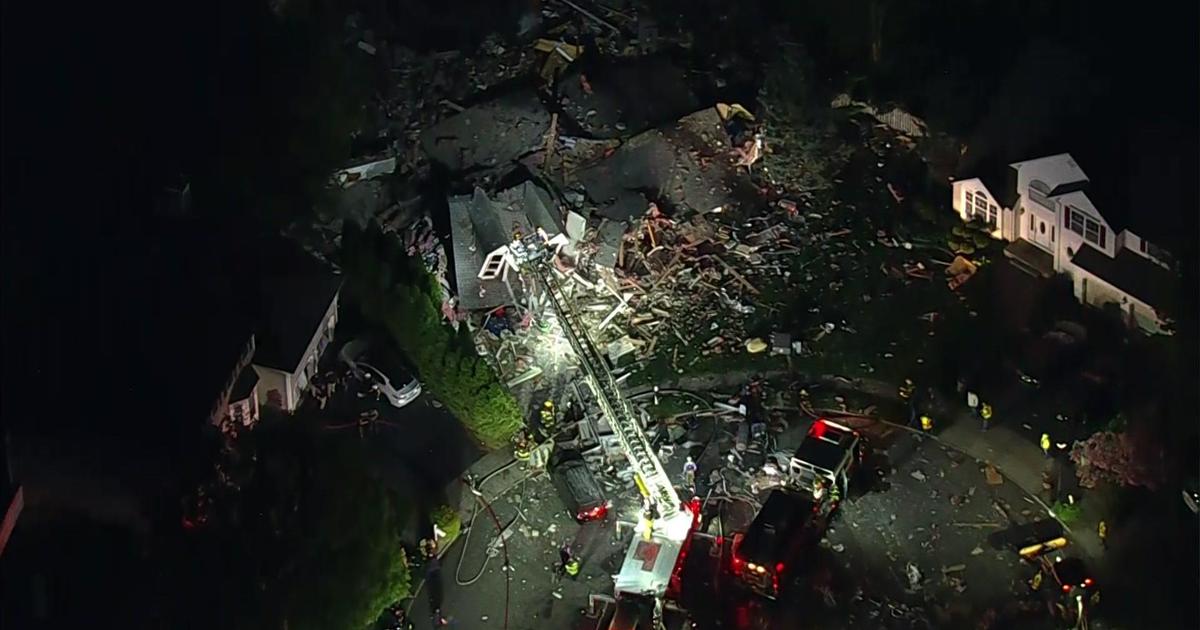NJ TRANSIT Executive Defends Storing Trains In Low-Lying Areas Ahead Of Sandy
TRENTON, N.J. (CBSNewYork/AP) - The New Jersey state Assembly held a committee hearing Monday on the damage sustained by NJ TRANSIT's infrastructure during superstorm Sandy.
The mass transit agency's executive director of Jim Weinstein testified that the maintenance complex in Kearny and the western end of the Hoboken rail yards had never flooded before.
WCBS 880's Jim Smith reports
Podcast
"It is entirely wrong to characterize these particular sites as flood-prone," Weinstein said.
Much of Hoboken was left under water after Sandy hit.
The agency was criticized for storing much of the commuter rail fleet in low-lying areas near bodies of water.
The Kearny Meadowlands complex is located where the Passaic and Hackensack rivers feed into Newark Bay. The site at is peak is not even 20 feet above sea level.
Weather models showed the storage areas had an 80 to 90 percent chance of staying dry during the storm, Weinstein said.
"The decisions on where to keep and move our rail cars and locomotives were sound," Weinstein said. "The bottom line is our decision-making process was sound."
1010 WINS' Steve Sandberg reports
Podcast
Nearly a third of NJ TRANSIT's locomotives and a quarter of its rail passenger cars suffered storm damage.
In total, 62 locomotives, and 261 rail cars, stored in the Meadows complex and in Hoboken during Sandy were water-damaged and out of commission, according to NJ TRANSIT.
Weinstein testified that the storm provided a lesson for future storm preparedness.
"In my lifetime, we've never seen a storm like this, we've never seen the devastation. But we've seen it now." Weinstein said. "Sandy fooled us once, no Sandy in the future is going to fool us again."
Weinstein said the agency is looking for alternative sites to keep equipment safe in the future.
The cost may be in the tens of millions of dollars to replace the NJ TRANSIT trains knocked out of service by the storm.
Weinstein told lawmakers it will take $1.2 billion in repairs and upgrades to ensure something like the devastation from Sandy never happens again. He promised to fix the system without a fare increase, 1010 WINS' Steve Sandberg reported.
By contrast, the Metropolitan Transportation Authority - including the New York City subway, the Metro-North commuter line and the Long Island Rail Road - reported just two locomotives and 11 rail passenger cars damaged by the storm because the agency took precautions to keep its trains high and dry.
The state transportation commissioner was also scheduled to testify Monday but did not attend the hearing.
The chair of the Transportation Committee blasted Jim Simpson for not showing up.
Assembly Deputy Speaker John Wisniewski, D-Sayreville, released a statement reading: "His failure to appear today makes one wonder what he has to hide about his department's planning and response." Wisniewski said he wanted to probe whether the department's facilities and equipment were properly protected.
Transportation advocates who appeared before the committee said the storm made clear some troublesome priorities in state transportation policy.
"The storm did not create new vulnerabilities," said Janna Chernetz, a transportation advocate at Tri-state Transportation Campaign. "It exposed existing ones."
She called for the state to rethink how it spends money on transportation. More money should go to maintaining and rebuilding existing roads and rail lines, she said, largely to make them less of a risk during natural disasters. She said less should go to adding lanes of roads and that a stable funding source is needed for transportation projects.
Joseph Clift, a former official at the Long Island Railroad and Conrail, said the rail car destruction in New Jersey was largely preventable.
He said that the yards are susceptible to flooding and that a 10 to 20 percent chance of flooding from Sandy was risky enough that the cars should have been put elsewhere. He said that leaving cars in Kearny "was the equivalent of making a one-in-five bet that $1 billion of equipment would be flooded. That's awfully bad odds."
Please share your comments below...
(TM and Copyright 2012 CBS Radio Inc. and its relevant subsidiaries. CBS RADIO and EYE Logo TM and Copyright 2012 CBS Broadcasting Inc. Used under license. All Rights Reserved. This material may not be published, broadcast, rewritten, or redistributed. The Associated Press contributed to this report.)



